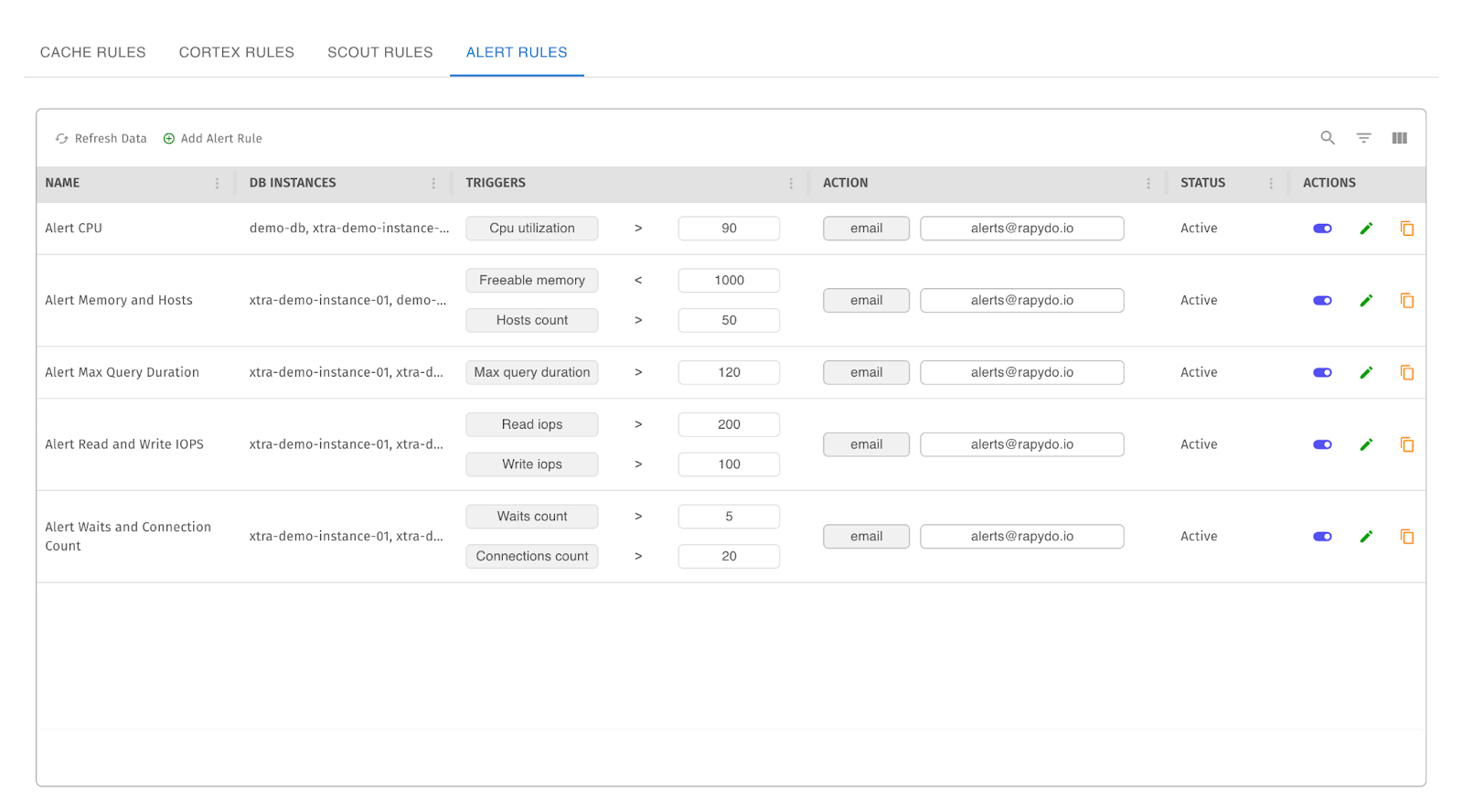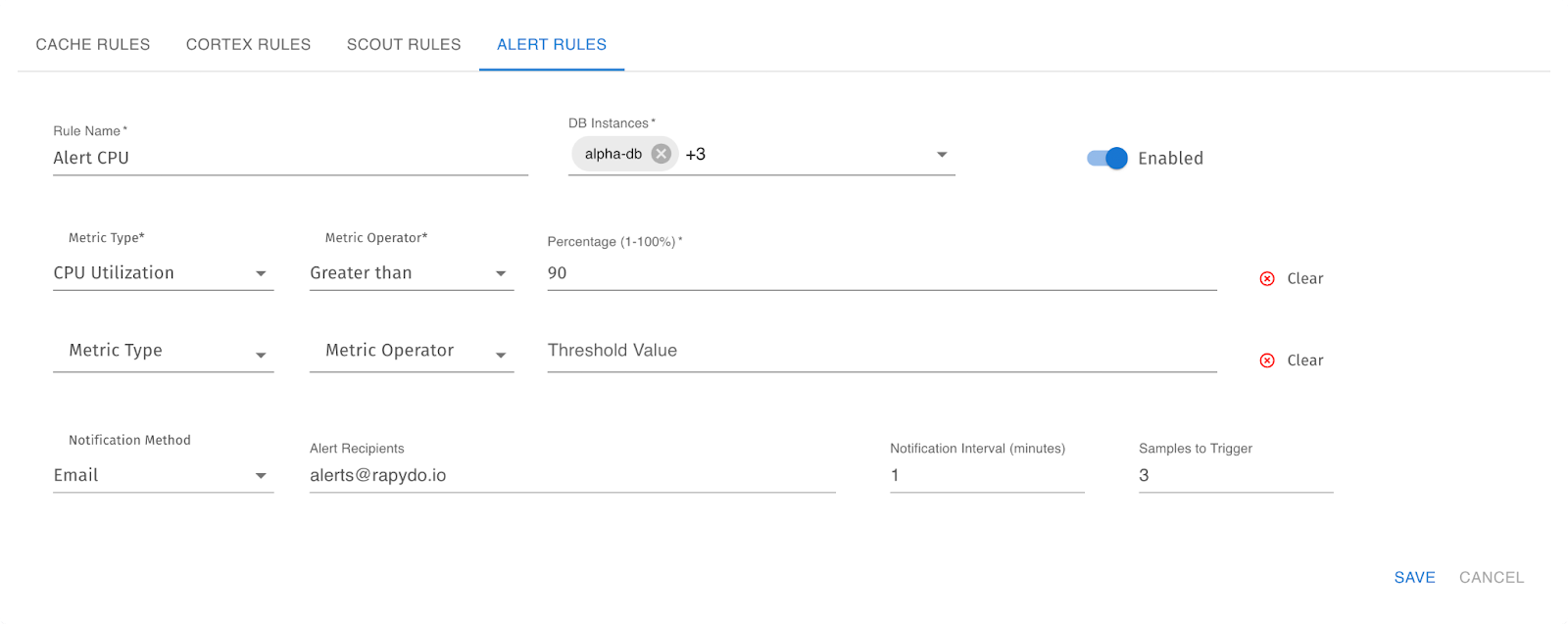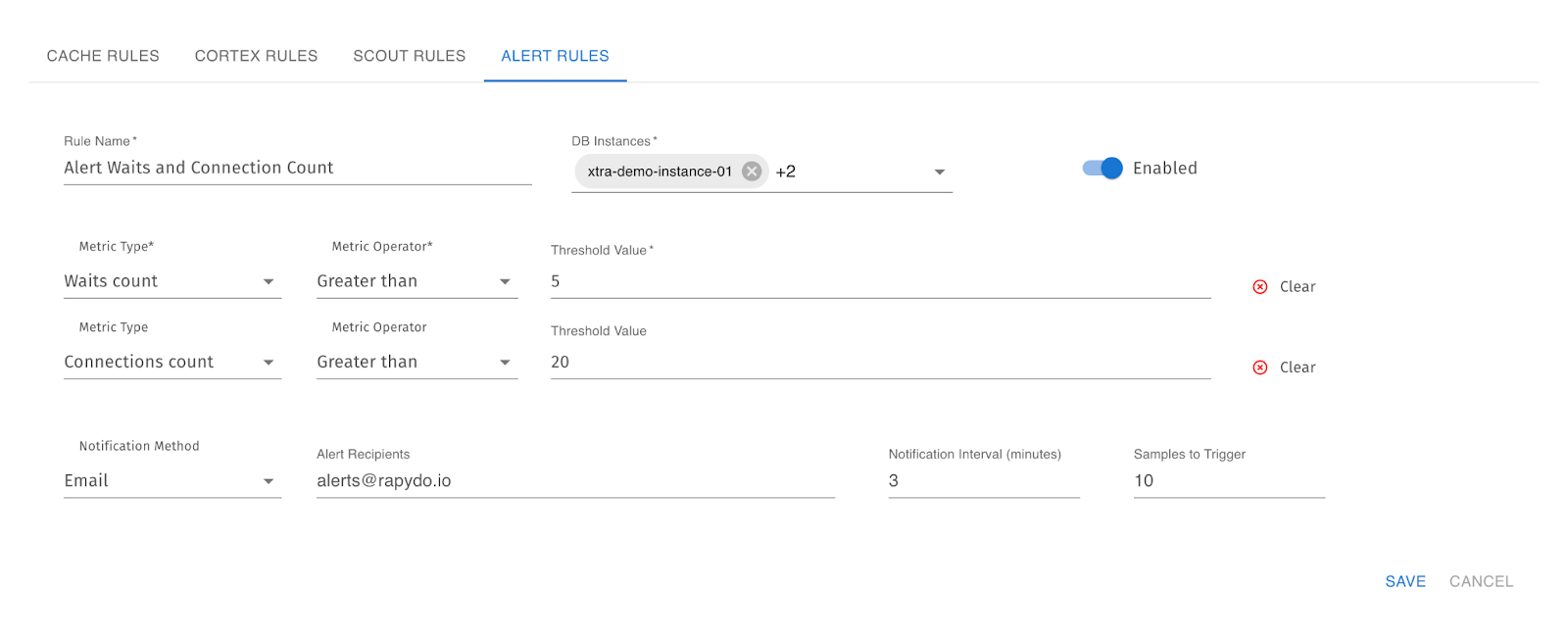Skip to main contentTriggers - events that are defined by the user, for example: The CPU Utilization of the database machine is over 90%.
Actions - the measures that the user defines for the system to take if a certain triggers (conditions) are met.
Select Database(s) - allows you to choose one or more database instances to apply the rule to.
Trigger Types
- CPU Utilization - Database instance current CPU level.
- Free Memory - Database instance current free memory amount.
- Max Query Duration - The maximum amount of time a query can run without generating an alert.
- DB Count - Change in the number of database schemas.
- Users Count - Change in the number of users in the database.
- Hosts Count - Change in the number of hosts in the database.
- Waits Count - Change in the number of waits in the database.
- Connections Count- Change in the number of user connections in the database.
- Read IOPS - The maximum amount of read IOPS without generating an alert.
- Write IOPS - The maximum amount of write IOPS without generating an alert.
Trigger Operator Types
- Greater Than
- Greater Than Or Equal
- Less Than
- Greater Than Or Equal
Trigger Values
- CPU Utilization - The value in percentage.
- Free Memory - The value in Megabytes.
- Max Query Duration - The value in seconds.
- DB Count - Unitless number.
- Users Count - Unitless number.
- Hosts Count - Unitless number.
- Waits Count - Unitless number.
- Connections Count - Unitless number.
- Read IOPS - Unitless number.
- Write IOPS - Unitless number.
Action Type
Action Values
- Recipients - a list of Email(s) address(es) to send the alert to.
Examples
Alert Rules List

Alert CPU Utilization

Alert Waits and Connection Count





